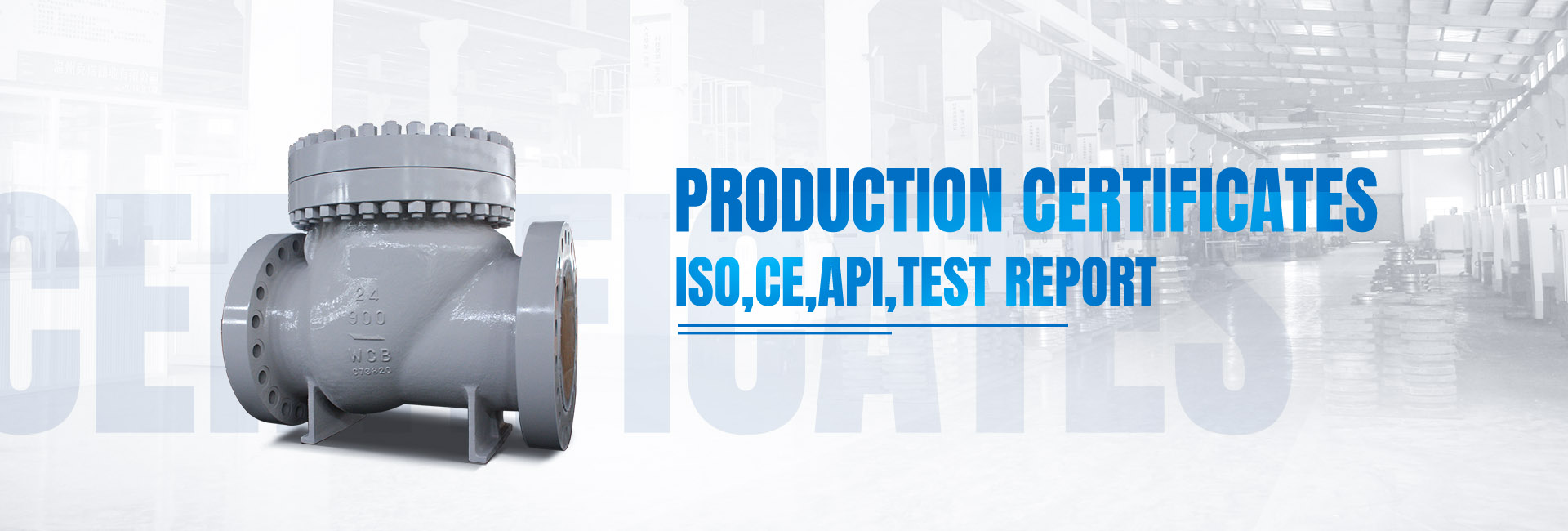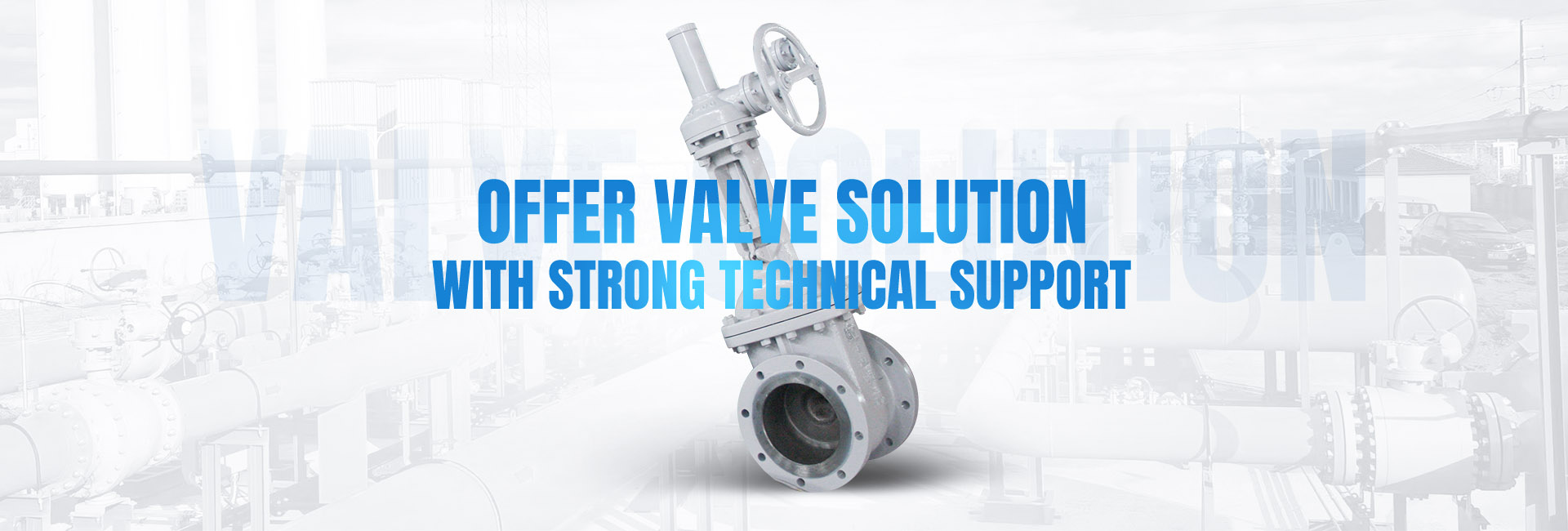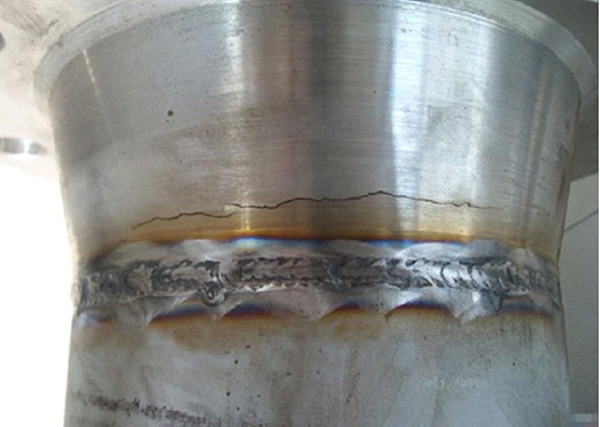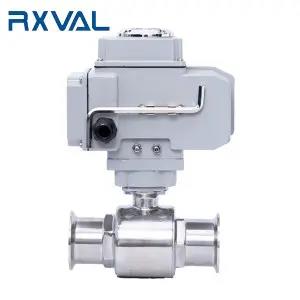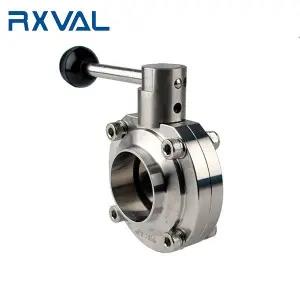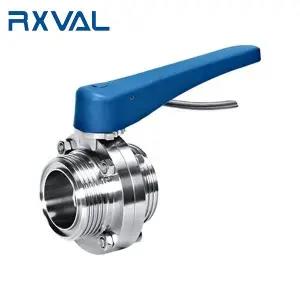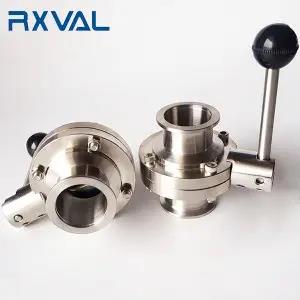Here are more products for you to choose from
1. Why there is a flange cracks after welding
In the production of container equipment, when the stainless steel flange and the cylinder are welded, there will be cracks in the neck of the flange, not at the welding seam. What's the matter? Why is there such a situation? First of all, let's analyze the reasons for hot cracks.
Hot cracks are cracks generated in the high temperature stage during the cooling process of the weld, mainly in the weld metal, and a small amount in the near seam area. It can be divided into crystallization (solidification) cracks, liquefaction cracks and polygonal cracks. Crystalline cracks are the most common type, mainly in the welds of carbon steels containing more impurity elements (S, P, Si and C), single-phase austenitic stainless steels, aluminum and its alloys and other welded structures. The main influencing factors are the welding tensile stress, the low melting point eutectic (chemical composition of the weld metal), the degree of overheating of the welded joint (process).
2.How to avoid the Hot Cracks
Judging from the photos, 304 stainless steel has strong plasticity. If it is a forged flange, the welding process requirements are relatively loose, and cracks are generally not caused. If it is a casting, this situation is prone to occur. So, in practice, how do we avoid cracks in the work-piece? Measures to reduce the tendency of hot cracking include:
1) Reduce the content of impurity elements such as S and P in the material.
2) Properly increasing the Mn/S ratio can replace Fe of the Fe-FeS low-melting eutectic to form MnS with a melting point of 1620Co, thereby improving the crack resistance of the weld.
WC=0.10~0.12%, WMn=2.5% before it works
WC=0.13~0.20%, WMn=1.8% or less is effective
WC=0.21~0.23%, the beneficial influence range of WMn is narrower.
3) Use appropriate welding methods and processes to control line energy input and reduce weld overheating.
4) Add Ti, Mo, Nb or rare earth elements to the welding material to inhibit the development of columnar grains, refine the grains, and significantly improve the performance.
DIN SANITARY BUTTERFLY VALVE THREAD END WITH MULTI-POSITION HANDLE
Sanitary ball valve is polished inside and out. Clamp ends allow for easy disassembly to clean, repair or replace parts as necessary.
Sanitary ball valve with actuator is used in food & beverage processing, brewing, oil refinery, cosmetic, pharmaceutical, and chemical industries to control medium flow.
Sanitary ball valve is polished inside and out.
Clamp ends allow for easy disassembly to clean, repair or replace parts as necessary.
Disc fully machined and polished
Easy mounting of electric or pneumatic actuators with the industry standard ISO5211 direct mounting pad.
All materials comply with FDA, USDA and 3-A requirements
SMS SANITARY BUTTERFLY VALVE WELDING END WITH PULL HANDLE
● The body and disc of the Sanitary butterfly valve are built with high-precision CNC lathe processing.
● Sanitary butterfly valves are compact, lightweight, and use a simple composition with only a few components.
● Using a butterfly valve is simple and convenient;
● The disc only needs to rotate 90° to be able to open and close quickly and provide dependable fluid control characteristics.
● The Sanitary butterfly valve has two types of seals — a ballistic seal and a metal seal.
● An elastic seal valve can be embedded in the valve body or attached to the disc around.
SMS SANITARY BUTTERFLY VALVE THREAD END WITH MULTI-POSITION HANDLE
The butterfly valve is designed for food & beverage processing, chemical products, industrial fluid applications.
Disc fully machined and polished
100% inspected
Stainless steel sanitary butterfly valves can be opened automatically through actuator or manually with handle.
The handle blocks hygienic butterfly valves in the " open " or " closed " position, certainly there are the other position available.
The actuator push piston of axial movement into 90 degree so that it controls sanitation butterfly valves.
DN25 SANITARY BUTTERFLY VALVE CLAMP END
The body and disc of the Sanitary butterfly valve are built with high-precision CNC lathe processing.
Sanitary butterfly valves are compact, lightweight, and use a simple composition with only a few components.
Using a butterfly valve is simple and convenient; the disc only needs to rotate 90° to be able to open and close quickly and provide dependable fluid control characteristics.
A health-grade pneumatic butterfly valve should maintain a fully open position, the disc thickness provides the medium flow through the valve body, and thus the pressure drop caused by the small valve has good flow control characteristics.
The Sanitary butterfly valve has two types of seals — a ballistic seal and a metal seal. An elastic seal valve can be embedded in the valve body or attached to the disc around.
Wenzhou Ruixin Valve Co., Ltd.
Post time: Sep-03-2022


